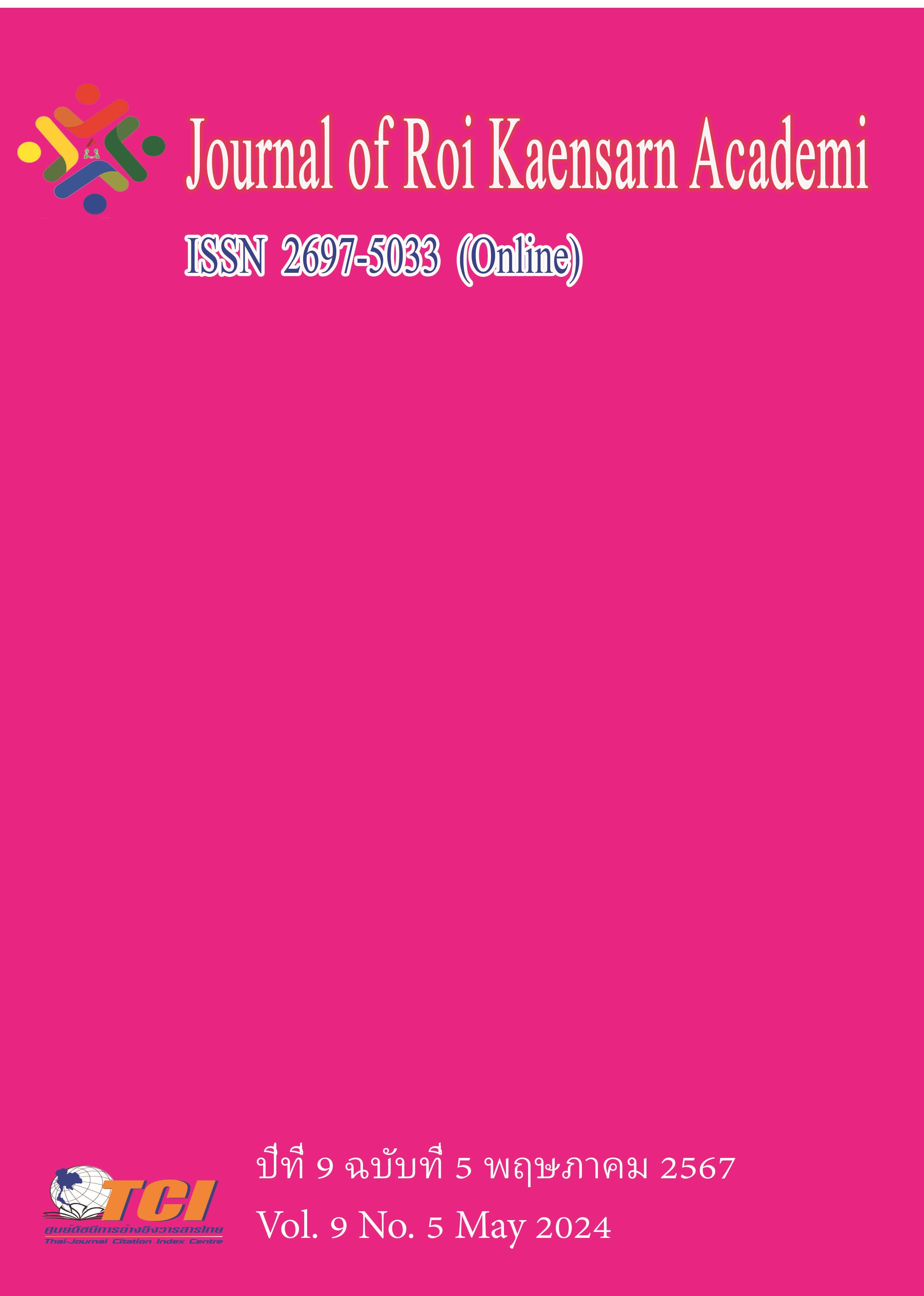การประเมินตนเองด้านสมรรถนะการเขียนย่อหน้าภาษาอังกฤษและความคิดเห็นของนักศึกษาต่อเทคนิคการเขียนเค้าโครง
Main Article Content
บทคัดย่อ
การวิจัยแบบผสมผสานนี้มีวัตถุประสงค์เพื่อ 1) เปรียบเทียบผลการประเมินตนเองต่อสมรรถนะการเขียนย่อหน้าภาษาอังกฤษของนักศึกษาก่อนและหลังเรียนด้วยเทคนิคการเขียนเค้าโครง 2) ค้นหาประเด็นการเขียนย่อหน้าที่นักศึกษามีการพัฒนาสมรรถนะมากที่สุดและน้อยที่สุด และ 3) สำรวจความคิดเห็นของนักศึกษาต่อความสำคัญ ปัญหาและการแก้ไขปัญหาของการใช้เทคนิคการเขียนเค้าโครง กลุ่มตัวอย่าง ได้แก่ นักศึกษาวิชาเอกภาษาอังกฤษ จากมหาวิทยาลัยของรัฐแห่งหนึ่ง จำนวน 61 คน โดยใช้วิธีการเลือกแบบเจาะจง เครื่องมือการวิจัย ได้แก่ แบบสอบถามการประเมินตนเองด้านสมรรถนะการเขียนย่อหน้า และแบบสอบถามความคิดเห็นด้านความสำคัญ ปัญหาและการแก้ไขปัญหาในการใช้เทคนิคการเขียนเค้าโครง การวิเคราะห์และรายงานข้อมูลเชิงปริมาณใช้ค่าสถิติพรรณนา ค่าเฉลี่ยและค่าเบี่ยงเบนมาตรฐาน การวิเคราะห์และรายงานผลข้อมูลเชิงคุณภาพใช้การวิเคราะห์เนื้อหาและการบรรยาย ผลการวิจัยพบว่า 1) ค่าเฉลี่ยการประเมินตนเองของนักศึกษาต่อสมรรถนะการเขียนย่อหน้าภาษาอังกฤษด้วยการใช้เทคนิคการเขียนเค้าโครงหลังเรียนสูงกว่าก่อนเรียน 2) ประเด็นการเขียนย่อหน้าที่มีการพัฒนาสมรรถนะมากที่สุด ได้แก่ การใช้คำเชื่อม การควบคุมความคิด และความเป็นหนึ่งเดียว ประเด็นการเขียนย่อที่มีการพัฒนาสมรรถนะน้อยที่สุด ได้แก่ ความราบรื่นของย่อหน้า กลไกการเขียน ตัวอักษรพิมพ์ใหญ่และเครื่องหมายวรรคตอน และการใช้โครงสร้างประโยคและไวยากรณ์ และ 3) นักศึกษาเห็นความสำคัญของเทคนิคการเขียนเค้าโครงต่อการเขียนย่อหน้าภาษาอังกฤษ แต่ยังพบปัญหาเกี่ยวกับการใช้โครงสร้างประโยค ไวยากรณ์ และคำศัพท์ นักศึกษาแก้ปัญหาโดยการเรียนรู้และทบทวนโครงสร้างและไวยากรณ์ภาษาอังกฤษเพิ่มเติม การสอบถามความคิดเห็นจากเพื่อนร่วมชั้นเรียน และการใช้พจนานุกรม
Article Details
เอกสารอ้างอิง
รัตนะ บัวสนธ์. (2564). การวิจัยและพัฒนานวัตกรรมการศึกษา. (พิมพ์ครั้งที่ 5). กรุงเทพมหานคร: จุฬาลงกรณ์มหาวิทยาลัย.
ธันยวิช วิเชียรพันธ์, (2564). พัฒนาการเรียนรู้สู่ผลลัพธ์ในฝันด้วยเทคนิค “การประเมินผลตนเอง”. ออนไลน์ สืบค้นเมื่อ 5 กุมภาพันธ์ 2567. แหล่งที่มา : https://iamkru.com/2021/05/03/assessment/.
Boud, D. (2000). Sustainable assessment: Rethinking Assessment for the Learning Society. Studies in Continuing Education. 22, 151-167.
Brammer, C. (2007). Peer Review from the Students’ Perspective: Invaluable or Invalid. Composition Studies. 35 (2), 71-85.
Crème, P. and Lea, M. (2003). Writing at University. (2nd ed.). Philadelphia: Open University Press.
Darus, S. and Subramanian, K. (2009). Error Analysis of the Written English Essays of Secondary School Students in Malaysia: A Case Study. European Journal of Social Sciences. 8 (3), 483-495.
David, K. (2004). Manage Your Writing. California: Komei.
Donahue, S. (2007). Writing: Road-Runner English. Indianapolis: MacGraw-Hill.
Duigu, G. (2003). Essay Writing for English Test. Sydney: Academic English Press.
Ellis, G. and Ibrahim, N. (2015). Teaching Children How to Learn. Surrey: Delta.
Goose, A. (2001). Eight Kinds of Writing: Lesson and Practice for Writing Tests. (2nd ed.). Portland: Weston Walch.
Indriani, K.S. (2019). The Effect of Outline Planning in Argumentative Essay Writing of Fourth Semester Students of English Department. Lingual. 8 (2), 1-4.
Negari, G.M. (2011). A Study on Strategy Instruction and EFL Learners’ Writing Skill. International Journal of English Linguistics. 1 (2), 299-307.
Oshima, A. and Hogue, A. (2007). Introduction to Academic Writing Level 3. (3rd ed.). New York: Pearson Education.
Purwanti, T. T. (2015). The Implementation of Self-Assessment in Writing Class: A Case Study at STBA Lia Jakarta. TEFLIN Journal. 26 (1), 97-116.
Sabrina, M. and Sianipar, Y.A. (2012). Improving Students’ Achievement in Writing Descriptive Paragraph Using Outline Technique. Transform Journal of English Language Teaching and Learning of FBS UNIMED. 3 (1), 1-20.
Susanti, E. (2018). The Impact of Learning Together Method-Based Lesson Study on Students’ Self-Awareness in Speaking Class. Journal of English Education. 1 (2), 31-43.
Taufik, M., Bambang, and Cahyono, Y. (2016). Investigating the Effect of Using Self-Assessment on Iranian EFL Learners’ Writing. Journal of Education and Practice. 7 (28), 80-89.
Tazky, K. (2018). The Effect of Using Outline Technique to Improve Students’ Ability in Writing Descriptive. Retain. 6 (3), 202-210.
Zimmerman, B. J. (2002). Becoming a Self-Regulated Learner: An Overview. Theory into Practice. 41, 64-70.

